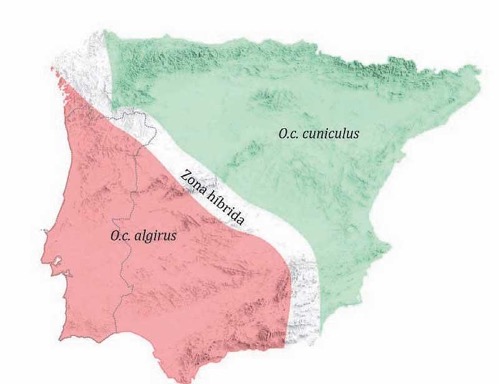THE RABBIT: DISTRIBUTION AND
POPULATION MONITORING

Two subspecies of rabbit are known: if the Iberian Peninsula is divided by a diagonal line running south-eastwards from Galicia to north-east Andalusia, O. c. algirus is found in the south-western sector and O. c. cuniculus in the rest of the peninsula.
Beyond the Iberian Peninsula, the range of the rabbit has been tied to the presence of man for centuries. The subspecies O. c. algirus is today found in the south-west of the peninsula, as well as in North Africa and on some offshore Atlantic islands, while O. c. cuniculus has spread to much of Europe including the British Isles, as well as to New Zealand and Australia, and parts of Africa and America. All known domestic races are derived from this latter subspecies.
Knowledge of the range of the rabbit, its abundances and population trends are fundamental for correctly evaluating its status and whether or not it is necessary to undertake management actions to reinforce its populations. Recent studies suggest that population trends in the subspecies O. c. algirus are more negative than in O. c. cuniculus.
Currently, a variety of methodologies are being used to study rabbit populations in the various regions of the Iberian Peninsula and so it is not possible to analyse in an integrated fashion on an Iberian scale all the data generated regarding the state of rabbit populations.
The LIFE Iberconejo project aims to create a distribution map of the rabbit in the Iberian Peninsula and to establish a standardized methodology that will provide a framework for monitoring rabbit populations on a long-term basis.


